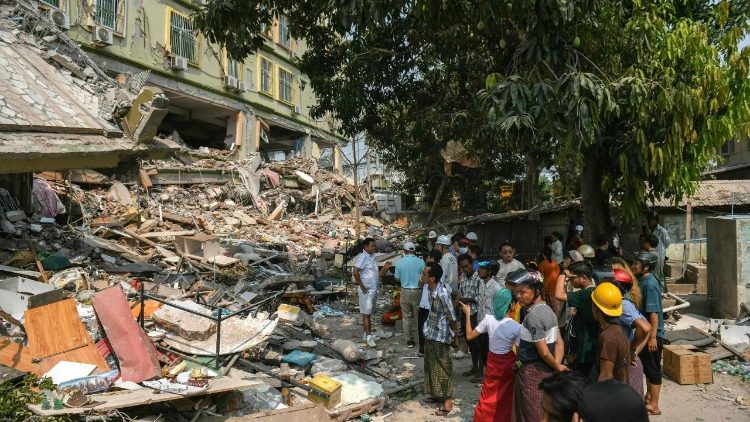Earthquake Hits Myanmar and Thailand
The earthquake that struck Myanmar and Thailand on March 28, 2025, had devastating effects. The National Centre for Seismology reported damage due to soil liquefaction and the earthquake’s frequency matching the natural vibrations of buildings. The earthquake’s epicentre was near Mandalay, Myanmar, and it registered a magnitude of 7.5. Aftershocks followed, complicating rescue efforts and increasing damage.
About Earthquake Magnitude
Magnitude measures the energy released during an earthquake. The moment magnitude scale (Mw) is now used for accurate assessment. This scale considers the fault area and seismic wave size. It replaced the older Richter scale due to its limitations in accuracy and applicability.
Soil Liquefaction
Soil liquefaction occurs when saturated soil loses strength during shaking. Loose, wet soils are most affected. This phenomenon causes structures to sink or collapse. It was a key reason for the extensive damage seen in Bangkok and surrounding areas.
Aftershocks and Their Effects
Aftershocks are smaller earthquakes following the main event. They can cause additional damage and hinder rescue operations. In this case, seven aftershocks were recorded, with magnitudes up to 7.0, shortly after the main quake.
Historical Context of Earthquakes in the Region
The Sagaing Fault, responsible for the recent earthquake, has a history of seismic activity. Past earthquakes in the region include a magnitude 7.5 quake in 1912 and a 7.2 quake in 1956. This historical context marks the ongoing seismic risk in this area.
Impacts on Infrastructure and Casualties
The earthquake resulted in severe infrastructure damage. In Bangkok, a high-rise construction site collapsed, leading to fatalities. Reports indicate over 1,600 deaths in Myanmar. The military government declared a state of emergency in several regions.
Modern Seismology Techniques
Seismographs are essential for recording earthquake activity. They measure ground motion during seismic events. Modern technology has digitised these recordings, providing more accurate data for analysis and response.
Intensity Measurement of Earthquakes
Intensity measures the shaking experienced at specific locations. The Modified Mercalli Intensity scale and the MSK scale classify earthquakes from I to XII. These scales consider human perception and structural damage, varying with distance from the epicentre.
Month: Current Affairs - March, 2025
Category: Defence Current Affairs







